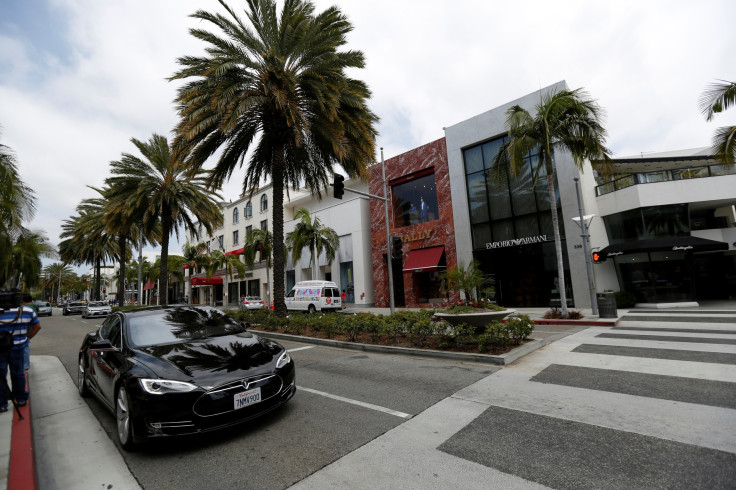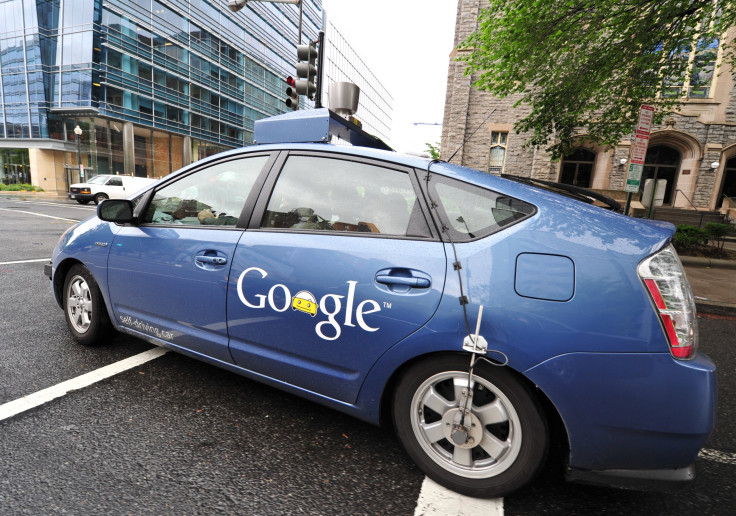Inside The Radical Plan To Launch A Fleet Of Self-Driving Shuttles In Beverly Hills

LOS ANGELES — For most Americans, the name Beverly Hills probably conjures images of celebrities, paparazzi, fancy cars and trendy nightclubs. But if all goes according to Mayor John Mirisch’s plan, the City of Beverly Hills could become known for something entirely different: Mirisch wants to make his affluent Southern California city the first in America to have a fully autonomous fleet of shuttles, i.e., driverless cars that use sensing technology to ferry passengers all around town.
“I loved ‘The Jetsons’ when I was a kid, but I don’t think I ever thought of a municipal autonomous shuttle system until fairly recently, in the past couple of years,” Mirisch said in an interview. “We want to encourage people to walk more, to bike more, but this is also a great solution.”
Nationally, the conversation around self-driving cars is reaching a fever pitch. Some 30 corporations, from Google to Tesla to Honda, are all investing in the technology. Perhaps the biggest signpost pointing toward the reality of self-driving cars is the fact that the industry now has its very own lobbyist, David Strickland, whose job will be to push the federal government to regulate this nascent but exciting form of transportation. "This technology will be available soon," Strickland told the Verge recently.
While futurists may welcome the idea of a fully autonomous system of public transportation, it's far from a reality. In fact, Mirisch's plan is more conceptual at this point than anything else.

While Mirisch touts the fact that Beverly Hills streets are a "perfect testing ground" for this sort of technology — he says there are few potholes and first-responder times average under three minutes — the reality is that the infrastructure could take millions in investment. And while the City Council passed a resolution last month, it did not allocate any funding to the enterprise. According to City Council documents, the first phase of building this system would be an "exploration of grant opportunities for the program [and] outreach to AV manufacturers for a potential partnership." In other words, the city doesn't exactly know how to make this happen and wants someone else to pay for it.
Plus, while Mirisch says the city is speaking with different "potential" technology partners — Google, Tesla, and Audi are mentioned casually in council documents — absent any signed deals, there's no real road map to actually build this infrastructure and get the project off the ground. So there is a glimmer of Hollywood to the mayor's pitch: It's a great idea to drum up publicity, but not much in the way of a concrete plan.
Regardless, last month, Beverly Hills City Council members voted unanimously to pass Mirisch’s “groundbreaking resolution” that would create “a program to develop autonomous vehicles as public transportation.”
Mirisch says the plan to develop the fleet of high-tech shuttles was inspired by a decidedly lower-tech development. In 2015, the Los Angeles County Metropolitan Transportation Authority, which operates the LA subways, approved a plan to build two subway stops in the middle of Beverly Hills. But the Metro division did not include plans for parking lots near the station, which presented a logistical issue that city planners call a “first and last mile” problem.
While futurists may rejoice at the idea of a fully autonomous system of public transportation, it’s far from a reality.
Still, it raises the question: Why develop a fleet of autonomous vehicles rather than simply increase the number of city buses with drivers? According to Mirisch, it’s a matter of efficiency and safety.
“Autonomous vehicles process algorithms a lot quicker than a driver can react, can use the streets better,” the mayor says. “There’s all sorts of things that autonomous vehicles could do that drivers simply could not do. Ultimately we were looking at this system as something that’s going to be a cost-effective way of transporting people on demand from point A to point B in the city. It’s something that doesn’t exist now.”
The idea of autonomous vehicles excites Mirisch, in fact, precisely because the difficulties of taking trains and buses discourage commuters from using them, he said. He's critical of the current system of public transportation, and said he believes Beverly Hills can do better. “Currently, public transportation is a second-class form of transportation," he says. "You use it not because you want to but because you have to, because you can’t afford it or you can't drive."
Not everyone is so enthralled with Mirisch's plan. In the days following the announcement, there were plenty of sarcastic jabs from critics who said the idea was simply proposed because wealthy residents wouldn’t stand for adding to the number of city buses around Beverly Hills.
“An old-fashioned subway is being built. ... A city would normally feed it with buses or other forms of transit, but not Beverly Hills, they want shiny,” wrote Lloyd Alter, a transportation blogger for Treehugger.com. Alter also took issue with the fact that the shuttles could be summoned only by smartphone. “Because being Beverly Hills, the poor, the aged and everyone else has a smartphone.”

Mirisch, however, says that by the time the shuttles could be up and running — sometime before 2023 — most people would have a smartphone, and this initiative would ultimately help people who can’t drive. “It could alleviate traffic, but it could also provide mobility to seniors, disabled people and children,” he said.
Still, there will be challenges. The first, naturally, will be cost. Mirisch would not cite any cost estimates, but said he and his administration are currently working with “different tech companies” that would be partners in the initiative.
Though the plan is subject to change, the mayor says the shuttles would be configured to seat anywhere between eight and 12 people. And because the city, which is 5.7 square miles, is currently being fitted with fiber-optic cables, autonomous vehicles could easily speak to each other with networked sensors. Mirisch is also open to the idea of allowing Beverly Hills to become a test site for personal self-driving cars, but the focus, he says, is simply high-tech public transportation. “While we welcome the use of autonomous vehicles for private individuals, what we’re trying to do is bring that technology into the realm of public transportation,” he says.

Grayson Brulte, co-chair of the Beverly Hills autonomous vehicle program, points out that alleviating traffic — not surprisingly — will be a key coup for the city. Just like everywhere else in the Los Angeles area, Beverly Hills is constantly beset by snarling traffic jams. But Brulte also stressed that autonomous cars could make the city safer, especially by reducing human errors. “If you and your wife want to go and have dinner, you can have a drink,” he says. “An autonomous vehicle can’t drink and drive, an autonomous vehicle can't make an illegal U-turn, and an autonomous vehicle can’t run a red light. Those safety aspects will help increase the traffic flow.”
Before any of this can become a reality, California legislators and the state Department of Motor Vehicles will have to create rules and regulations to allow development to begin. Mirisch is aware this may be a long battle, but the result could be transformative for the city. “This is the early days,” Mirisch says. “But if AVs become a first-class form of transportation, then that’s quite literally a revolution.”
Next fall, the City of Beverly Hills will sponsor an autonomous vehicle conference at the University of Southern California to "include a panel discussion on the current state of AVs, the potential for AVs to play a role within the larger multi-modal transportation environment and the current regulatory landscape." Perhaps by then, the city will have a more precise vision of how this plan might actually work.
© Copyright IBTimes 2024. All rights reserved.












